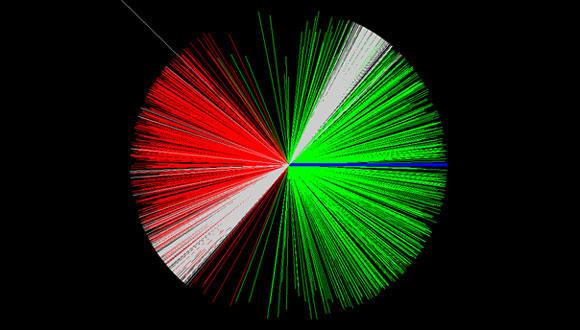Israel Joint Nuclear Physics Seminar
PROGRAM
14:30 - 14:45 Refreshments
14:45 - 15:45 "Measurement of the Proton Form Factor Ratio at Low Momentum Transfer", Moshe Friedman, for the E08-007 Collaboration, Hebrew University of Jerusalem
Abstract:
The proton electric and magnetic form factors are basic characteristics of the proton, and can be associated with the Fourier transforms of the charge and magnetic current densities in the nonrelativistic limit.
Although QCD can make rigorous predictions when the four-momentum transfer squared, Q2, is very large, in the non-perturbative regime this task is too difficult, and several phenomenological models attempt to make predictions in this domain. Measurements of the proton form factors were traditionally based on cross section measurements using the Rosenbluth separation method to extract the electric and magnetic form factors. In this method, the magnetic form factor is suppressed as Q2 decreases, and precise data at very low Q2 is not available. During the last two decades, scattering experiments with polarized beams and targets have been used for precise measurements of the proton form factors at much lower Q2 . The second part of experiment E08-007 was dedicated to measure the ratio between the proton form factors at 0.01 < Q2 < 0.08 GeV2, lower than ever achieved, by using the double-spin asymmetry technique. The experiment was conducted during the spring of 2012 at Hall A of the Thomas Jefferson National Accelerator Facility, using a 1-2 GeV polarized electron beam, scattering off a polarized solid ammonia target. Data analysis is currently in final stages.
Recently, inconsistencies between different measurements of the proton radius have prompted intense theoretical and experimental activities to resolve the discrepancy. This experiment might improve our understanding of this problem. In this talk, I will describe the experimental system, the main challenges in the data analysis, and present preliminary results for the asymmetries and their uncertainties.
15:45 - 16:15 Coffee break
16:15 - 17:15 "pbar-p production near threshold in e^+e^- annihilation", Vladimir Dmitriev, Budker Institute of Nuclear Physics, Novosibirsk
Abstract:
In the process $e^+e^- \rightarrow p\bar{p}$, measured by BABAR (SLAC) and later on by CMD3 (BINP) collaborations, several unexpected features have been observed. First, a very rapid growth of the cross section near threshold, faster than just s-wave contribution. Second, a strong energy dependence of the ratio $|G_E(q^2)/G_M(q^2)|$ of the proton electromagnetic form factors in a rather narrow region of energy near threshold. Third, the energy dependence of the cross section is rather flat below 200 MeV in c.m. and starts to fall above this energy.
We found that these effects can be explained by the influence of the final state interaction between slow moving nucleon and antinucleon. The final state interaction can be described by an optical potential. The imaginary part of the optical potential describes the process of nucleon-antinucleon annihilation into pions. Therefore, there is a contribution to the cross section of $e^+e^- \rightarrow$ hadrons via production of virtual $N\bar{N}$ with subsequent annihilation into mesons. Calculating this contribution one can obtain some restrictions on the imaginary part of $N\bar{N}$ optical potential.


